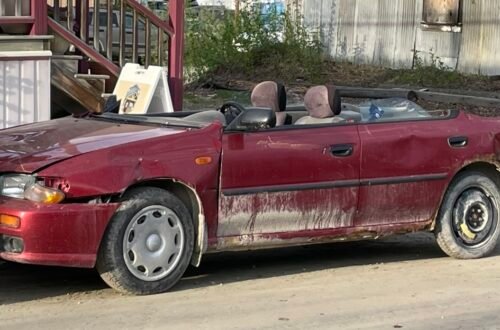
Yukon: Canada’s shameful present
There’s been a lot of news in recent years about Canada’s treatment of indigenous communities and our shameful past. The continued discovery of children’s remains at former residential schools have brought new attention to this topic, in very recent years. But in the North, none of this is news.

Part of my desire to travel through Canada’s more remote and northern areas is to better understand our indigenous communities. I spend my professional life engaging with and trying to understand communities and cultures around the world. And yet, in many ways, my own backyard is a mystery.
More than anywhere else in Canada that I’ve travelled, the North feels like a different country. And after more than a week in the Yukon, that feeling is perhaps greater than ever. Watching the news here was as different as any other country that we’ve travelled to. We had no idea that there was a separate Northern CBC! The perspective felt different (a headline about mercury levels in animals focused on their edibility vs their own safety) and other featured stories about the continued crisis of missing and murdered indigenous women were ones that would barely make the tail end of a broadcast back home. There’s always variation in news from one region to another, but this felt like so much more of a divide than that.
It’s partly the remoteness. The harsh landscape and distinct impact that has on ways of life in the North makes for different priorities and practices that wouldn’t always apply, or make sense in the rest of Canada. And yet, it would be a miss not to recognize the seeming divide between indigenous peoples, and the rest of Canada. CBC Northbeat was a separate channel with a separate narrative and point of view – very different than the typical CBC Vancouver vs Toronto nuances.

And at the same time, there is also definitely a greater connection between the varied cultures and communities in the North. It’s impossible not to be aware of the indigenous land you’re standing and acting on at all times; land acknowledgements have so much more meaning and impact when the traditional culture is alive and well within view. At it feels so much more tangible to respect traditions and the ways of life that predate our own with more ongoing dialogue and knowledge.
At our wildlife tour, for example, we learned that the Preserve would rehab but never house Bears since they are held in spiritual regard by the Indigenous community whose land the facility operates on. They align themselves to that clan, and operate with their practices in mind. There is definitively greater awareness in this part of the country for these communities and the role they play in Canada’s past, present and future.
We’ve tried to take tours, see sights and visit interpretation centres that give us greater insight. We’ve taken in as much local radio and television that features indigenous communities as we can while we’ve been in Yukon. And we’ve come away with a much greater understanding of how much we just don’t know, and how much more we want to learn.
Neither Jay or I feel like we have all the information we need to incorporate greater understanding of indigenous culture and the Canadian history of First Nations into our lives. We came home with more questions than ever, but with more insight and language with which to ask and learn more.
We’re looking forward to it.






